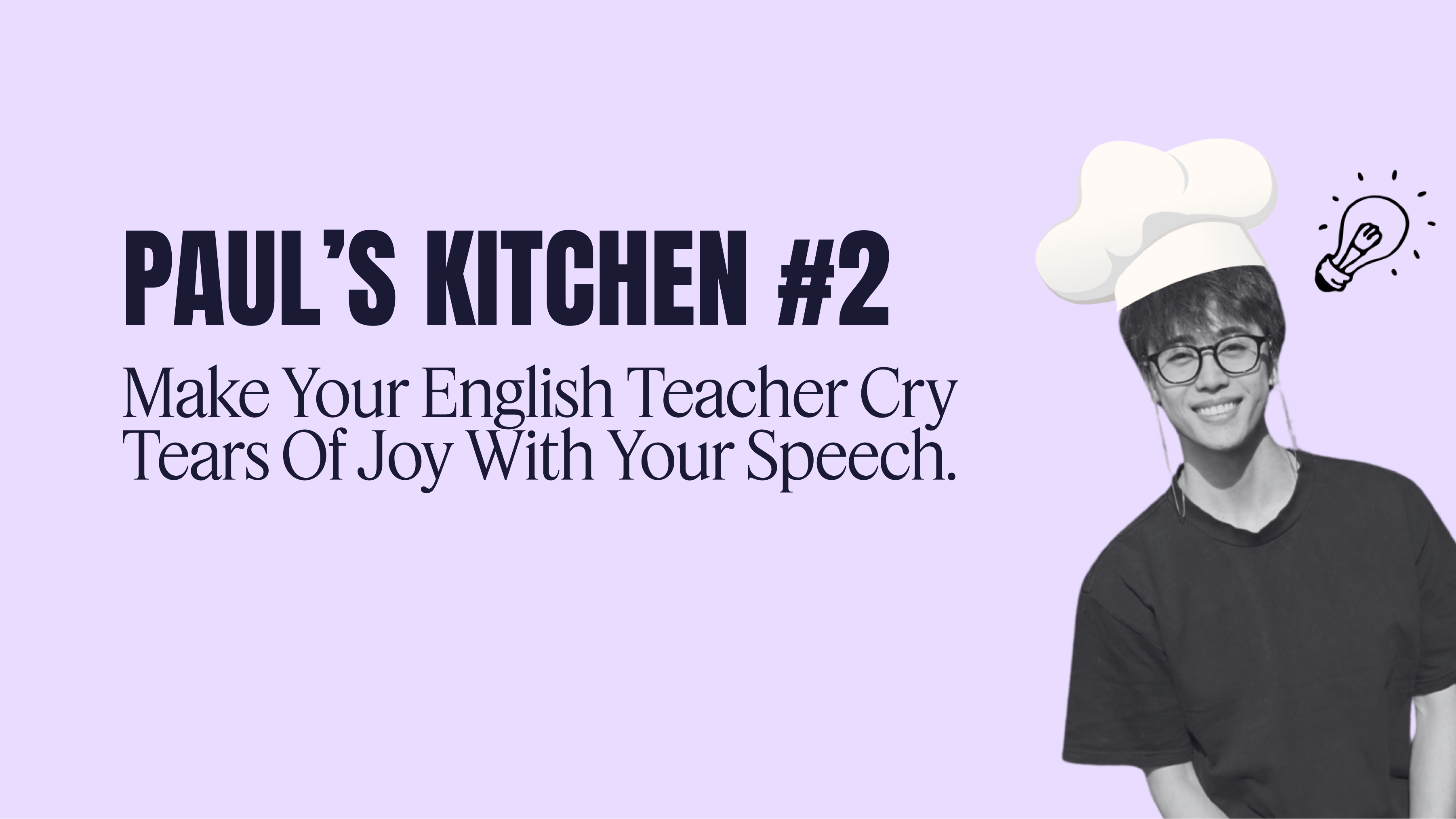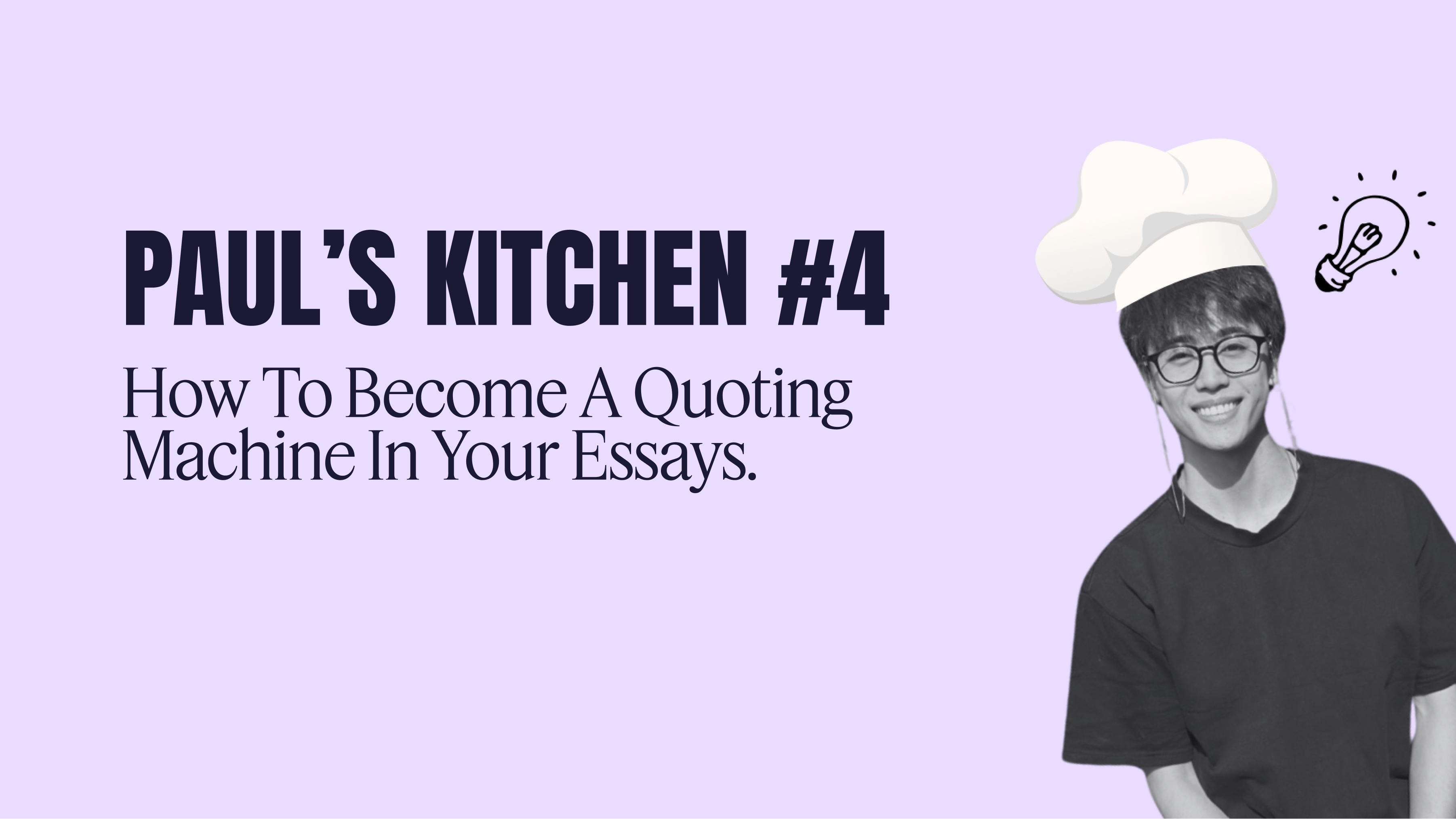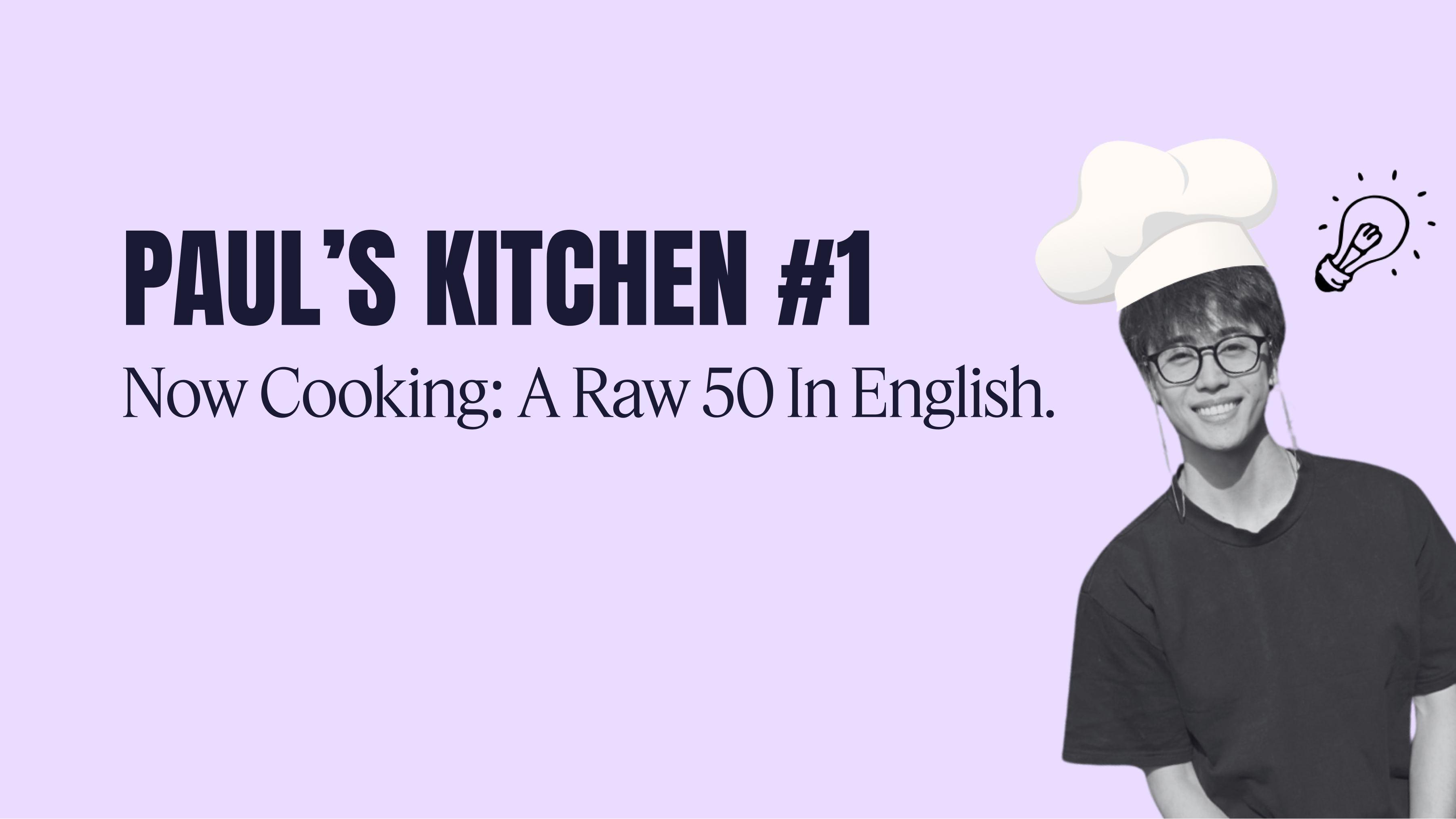Make your English teacher cry tears of joy with your speech.

Hello there, and welcome to edition 2 of Paul’s Kitchen! In today’s edition, we’re talking all things oral contention, including what your contention should look like, as well as a link to our ultimate guide on drafting and presenting your speech.
Plus, Lindsey answers your questions! Thanks so much to everyone for submitting last edition. We were overwhelmed with the number of questions, so we’ll be answering more of them in a different blog post or subsequent newsletters but scroll down below to see if yours was the one chosen for this week. Remember, if you’ve got a burning question, click the link below to submit!
Some vocab to put on your list 🤌
“postcolonial”
occurring or existing after the end of colonial rule
In an example: “Trevor Noah’s ‘Born a Crime’ depicts the comedian’s coming of age in postcolonial South Africa.”
“quotidian”
ordinary or everyday; mundane
In an example: “Through hauntingly beautiful shots of the natural Australian wildlife, Johnson juxtaposes the peace of quotidian life with the sudden violence of colonisation.”
“adduce”
to cite as evidence
In an example: “Zooming out to the international landscape, Blaney adduces examples of successful policy change overseas to emphasise that change is possible with swift government action.”
Today's recipe 🍳
How to write an oral contention
It’s that time of the year again — no, not the time of year when everyone seems to be having a birthday (although that’s also true). It’s oral presentation season! Which means you’re going to be needing a topic for your speech. Contentions can be deceivingly tricky. Here are five rules to make sure your contention passes before you start writing your speech.
1. Do you have a solution?
If you’re presenting a problem (i.e., rent is too high), then you should be presenting a solution (i.e., that we should build more affordable government housing). This solution should have both pros and cons; i.e., it needs to be debatable. If you aren’t presenting a solution then…
2. If you aren’t presenting a solution, then is your problem inherently debatable?
If you don’t have a debatable solution, then you need to have a debatable problem. “Rent is too high” is probably not a debatable problem because most people might agree with that. “Racism is bad” is another example of a problem that is really not debatable either, and would therefore make a weak contention. “That AI is bad” is a problem that is much more debatable — many people would argue that AI is good, too.
3. If you wanted to, could you argue for the other side?
This ties in with tip number 2: your topic should have two sides. If you wanted to switch things up and suddenly argue for the other side, would you be able to? If you’re having a lot of trouble making that work, your argument might be too biased towards one side, which makes it a bit too obvious and therefore harder to persuade people. Remember, it’s more effective to make your teacher change their mind, rather than just tell them something they already know.
4. Is your scope manageable and realistic?
“That we should end climate change” is not a contention of a manageable scope for a speech of 5 minutes. “That the government should drop military spending to zero” is probably also not a realistic contention. Think about the logistics of your contention — if you’re calling for a ban on a particular product or service, ask yourself whether that ban can be feasibly carried out.
5. Does your topic change the world for the better somehow?
Finally, make sure that your contention makes some sort of positive impact on society as a whole, or a group of people within society. If your topic doesn’t really change society, the main thought that the audience will be left with at the end of your speech is, “well, okay, so what?”
And that’s it! Go forth and write your speeches. And if you’re looking for the full guide on how to write your oral presentation, you can find the article linked below under “Straight from the oven”.
Ask the head chef: Founder Lindsey Dang 👩🏻🍳
How to avoid overwriting and waffling
❓ How do I ensure that I am not waffling? 😭
❓How do I tone my sentences down from being overly wordy and convoluted while preserving sophistication and complexity?
I’m soo glad you two sent through these questions. It’s the first step to effective writing. IG maturing is realising that you can get perfect scores without fancy vocab and analytical buzz words that sound cool but are empty. Not all are created equal—some of the words used in academia may seem benign to the average Year 12, but are potent in impressing more advanced readers (e.g., your teacher, VCAA assessor, etc.)
Key strategies:
1. Read aloud test: If you get tongue-twisted, it’s probably not great. If it sounds smooth and almost musical, you’re on the right track.
2. One “big” word rule: As a general rule of thumb, each clause should have only one “big” word that draws attention — it makes it more impactful (the hero 🦸). If you have too many, they get skimmed through and lose their meaning. I’m not saying you shouldn’t use big words. If the sentence is complex structurally, use fewer big words. If the sentence is simple, hero the substance.
3. Focus on main clauses: Pay attention to the length of your subordinate/dependent clauses — they shouldn't distract readers. Make the main clause the HERO and ensure it has one substance-packed focus.
4. If you reduce the word count by 30% (or even 50%), will it lose meaning? Great writing is concise and impactful.
Remember: Less IS MORE.



